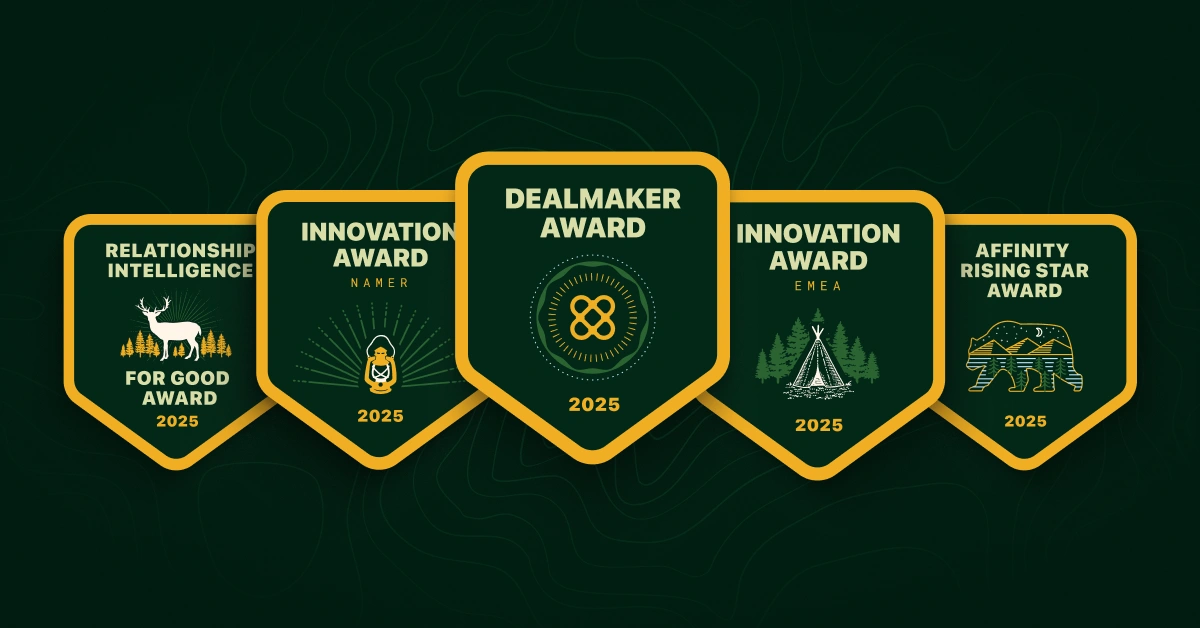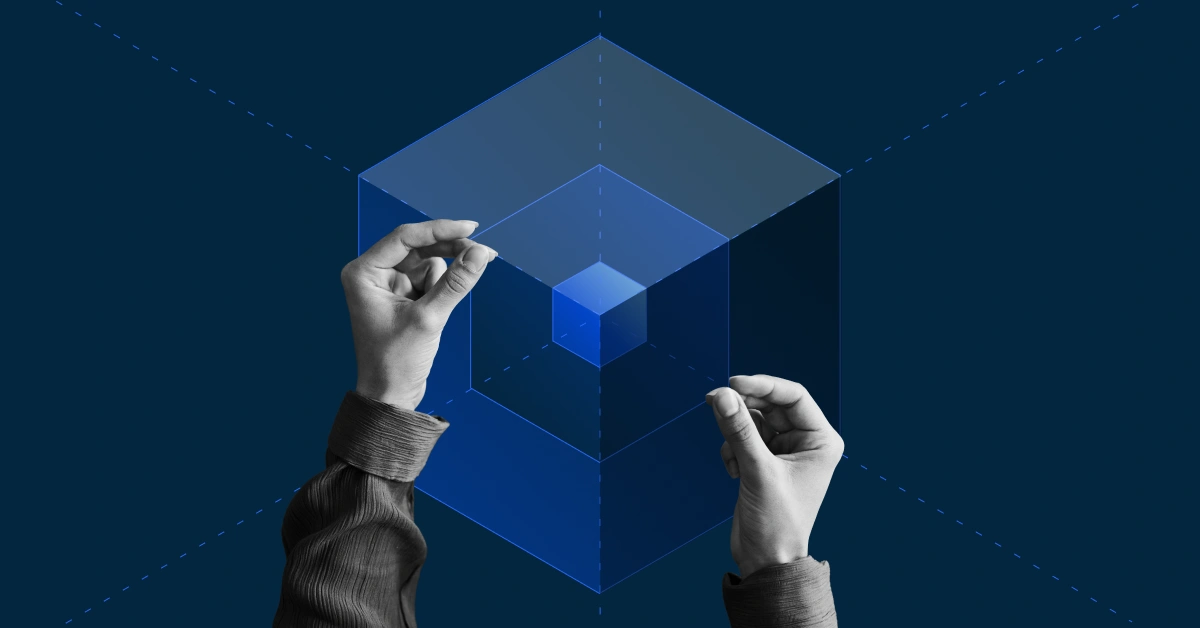Advances in generative artificial intelligence (AI) and large language models (LLMs) since late 2023 have changed the game. It’s now possible to build new features and products that previously would have been much harder to do in-house if teams were building and training models from scratch. At Affinity, we see an opportunity to supercharge the value we offer our customers with LLM-powered features built on our unique and extensive data set.
Our vision is clear: to boost productivity and effectiveness by freeing you from time spent capturing and gathering information and giving you the information you need to make informed decisions across the entire life of a deal.
To learn more about the evolution of AI at Affinity, we spoke to the product manager leading the team, Kunal Bhat. He explained how we developed our AI roadmap and what impact these new features will have on how firms source, manage, and close deals.
{{sourcing-waitlist-2025="/rt-components"}}
Key takeaways
- Affinity is integrating AI throughout the platform to streamline workflows and enhance decision-making for private capital dealmakers. Key features include Notetaker and Industry Insights.
- The Affinity Notetaker automatically captures and summarizes virtual meetings, reducing manual data entry and ensuring critical insights are logged directly into the CRM.
- Affinity’s Industry Insights gives dealmakers a quick snapshot of a target company’s competitive landscape, reducing the time spent searching for the right deals.
- Affinity prioritizes security, privacy, and a seamless integration of AI into existing workflows to support and enhance (not replace) the work of human dealmakers.
Tell us about your time at Affinity. What did you work on before AI?
When I first joined Affinity, we were trying to figure out how to help dealmakers where they work in places beyond the CRM. My first few releases focused on making a connection between the CRM (think relationship intelligence and enriched data) and Chrome, as well as Gmail and Outlook.
This involved revamping our Chrome extension, Affinity Pathfinder. Our goal was to reduce the pain of going back and forth between the places where dealmakers find prospective investments, the sites they use for research, and the CRM.
Sitting within the browser and email client, Affinity Pathfinder automatically surfaces relationships, interaction history, and Affinity Data (like funding, growth, and firmographic) so dealmakers can quickly decide if the company they’re viewing should be added to a deal list. It’s been great to hear it become a driver of productivity for many of our customers.
Now that AI is your focus, can you tell us how that conversation has evolved at Affinity?
Like many other organizations, we took immediate notice when ChatGPT was released and we soon realized the transformative possibilities of generative AI beyond the initial hype.
Learning and experimentation is key to our process. We wanted to understand how the technology works, evaluate different options to use it, and also determine its constraints, limitations, and concerns (such as privacy).
It soon became clear that the primary value of AI comes when we employ it with the context, knowledge, and workflows that are unique to Affinity and the customers that we serve.
{{AI-guide-202408="/rt-components"}}
What unique opportunities does Affinity have to deliver value with AI?
First up, we understand private capital dealmaking. We understand the nuances of what it means to be an investor in this space: the make-up of teams; the lingo; the key workflows like sourcing, diligence, closing deals, portfolio growth, and fundraising. We understand (and in many cases provide) the types of data and insights that these teams are looking for at each stage.We’re well poised to use AI to derive insights and support decision-making because we already automate interactions and connections based on our users’ inbox and calendar activity. The first AI product we launched was Affinity Notetaker, which automates note taking and transcription creation and brings more dealmaking data into the Affinity ecosystem—which we can then use to power more AI features.
Because Affinity is used throughout all the major deal team workflows, we have an extensive amount of insight about deals and relationships. We bring our own proprietary data to the table as well. The opportunity lies in using AI to do everything from alleviating the time spent capturing insights to more strategic activities like assessing deals. As an indispensable platform for many deal teams, we have the chance to dramatically affect everyday processes for our customers and help them make decisions faster.
You mentioned Affinity Notetaker. How did the team decide to prioritize this, and the other new AI features?
We started by thinking about how AI could make the lives of our users better. In this sense, it wasn’t any different to the rest of our product development. We’re guided by our close relationship and understanding of our customers’ workflows, pain points, and motivations.
Here’s a little about the thinking behind our first two AI tools:
Affinity Notetaker
Virtual meetings have become commonplace in venture capital, but there’s a lot of friction. Taking notes during a meeting fractures focus, which could mean missing out on a key detail or an opportunity for a good follow-up question. There’s also the risk of typos or errors that require further clarification after a meeting. Even after all that, it’s possible that those notes don’t get saved in the CRM (or not in the correct records), which limits their value to the broader team.
Affinity Notetaker automatically joins our customer’s meetings, transcribes their calls, and generates summarized meeting notes which are logged in the Affinity CRM. The tool uses our extensive understanding of private capital firms and roles to generate concise, error-free summaries that zero in on what matters most to our customers.
Affinity Notetaker is compatible with Zoom, Google Meet, and Microsoft Teams. Look out for feature updates in the months to come.
Industry Insights
We know that deal sourcing is an immensely important workflow in private capital. Yet finding companies that fit your fund’s thesis and have ROI potential is a very difficult task.
Right now, dealmaking is hyper competitive. In many cases there are only a few companies that fit the variables that funds are interested in, and lots of funds are chasing them.
When we launched Affinity Pathfinder we added our organizational data so that when a user is viewing a company they can view their headcount growth, understand basic firmographic deals, and also access their funding history. This proved incredibly helpful for deal teams as it gave them insight into whether a company fit their criteria before they added them to a deal list.
Industry Insights takes this a big step further. Right now there aren’t reliable competitive intelligence tools for dealmakers. Instead, tools commonly used regularly generate confusing or irrelevant results that don’t really compete with the company under consideration.
For our solution we turned to our proprietary data covering thousands of private and public companies. Using AI, we can accurately find companies that match the target investment that the user is assessing in the sourcing or due diligence stages of a deal.
The result is a list of companies that truly compete with the company you’re viewing: start-ups, public companies, all sizes. What matters is that the companies surfaced all serve and operate in the same market. Investors can use this knowledge to decide whether they want to enter a saturated market, or only find companies competing with other nascent small start-ups.
Industry Insights will shorten the amount of time you spend in the early stage of deal assessments and market research, allowing you to focus only on the right deals for your firm. The feature is available to all Advanced and Enterprise Affinity customers.
Which AI features are coming up next?
I am really excited about Deal Assist, which launched in October 2024.
Right now, there are inflection points throughout the qualification and vetting of a deal where dealmakers need a memo or tear sheet that summarizes all of the insights that the team has gleaned from research and interactions with a target company.
But doing this means sifting through notes created after research or from meetings, diving into file attachments provided by a founder or their team, and revisiting multiple emails with founders where you’ve gleaned specific information about their company.
Then there’s further time spent analyzing and forming a point of view before distilling it all into a document.
Deal Assist transforms this process with a conversational interface for users to ask questions and answers. The tool is AI-powered but grounded in that firm’s notes, transcripts, and attachments.
We recently spoke with Adam Perelman, Engineering Manager of ChatGPT at OpenAI about how AI will transform dealmaking. He reflected: “Something we're thinking about is how can you make the model's job as easy as possible? For example, give the model all the data it might need to be accurate in context through techniques like Retrieval-Augmented Generation (RAG). I think Deal Assist actually is a really great example of that, where it looks like there's a ton of relevant data about the company getting pulled into context, and the model is actually also instructed to cite sources whenever it can, which makes it easier for the model and for humans to verify that the data is accurate.”
Deal Assist is particularly geared towards assisting associates as they assess deals over a period of time and create artifacts like investment memos or tear sheets. It’s exciting because the AI insights are built on data that users can trust. Private capital continues to move towards data-driven practices in pursuit of greater efficiency and productivity, and there’s a great opportunity for us at Affinity to facilitate that with the use of AI.
There are a lot of heavyweights in the AI space today. How does Affinity work with vendors, and are we tied to a particular one?
Our goal is to build all AI-enabled products in a vendor-agnostic manner. We’re constantly evaluating different vendors and the progress being made by companies such as OpenAI, Anthropic, and Google to understand what tool best serves the needs of our customers and the needs of a specific feature.
Privacy, security, and reliability are critical aspects of this evaluation, but we also want to ensure that we stay on the cutting-edge of the technological advancements being made.
What advice do you have for Affinity users who want to become more data-driven?
When we think of data we often think of structured enriched information. But the unstructured data that firms have access to is really powerful, particularly as deals progress. Whether it’s insights gleaned through the hours spent doing research, in meetings, or even pitch decks and data rooms shared by prospects, there’s a lot of potential in that data.
The challenge lies in meaningfully assessing this unstructured data, and that’s where AI can help.
The more data that dealmakers centralize (in Affinity!) using automation, the more opportunity there is in using AI to analyze it. Features like Affinity Notetaker increase the breadth of deal data captured in Affinity, and features like Deal Assist unlock those analysis capabilities.
My advice for dealmakers who care about being data-driven is to prioritize this data capture across their team. The AI landscape is evolving rapidly, but how well you can use new features will depend on the quality and quantity of your underlying data.
{{AI-guide-202408="/rt-components"}}







.png)


.webp)
.webp)
